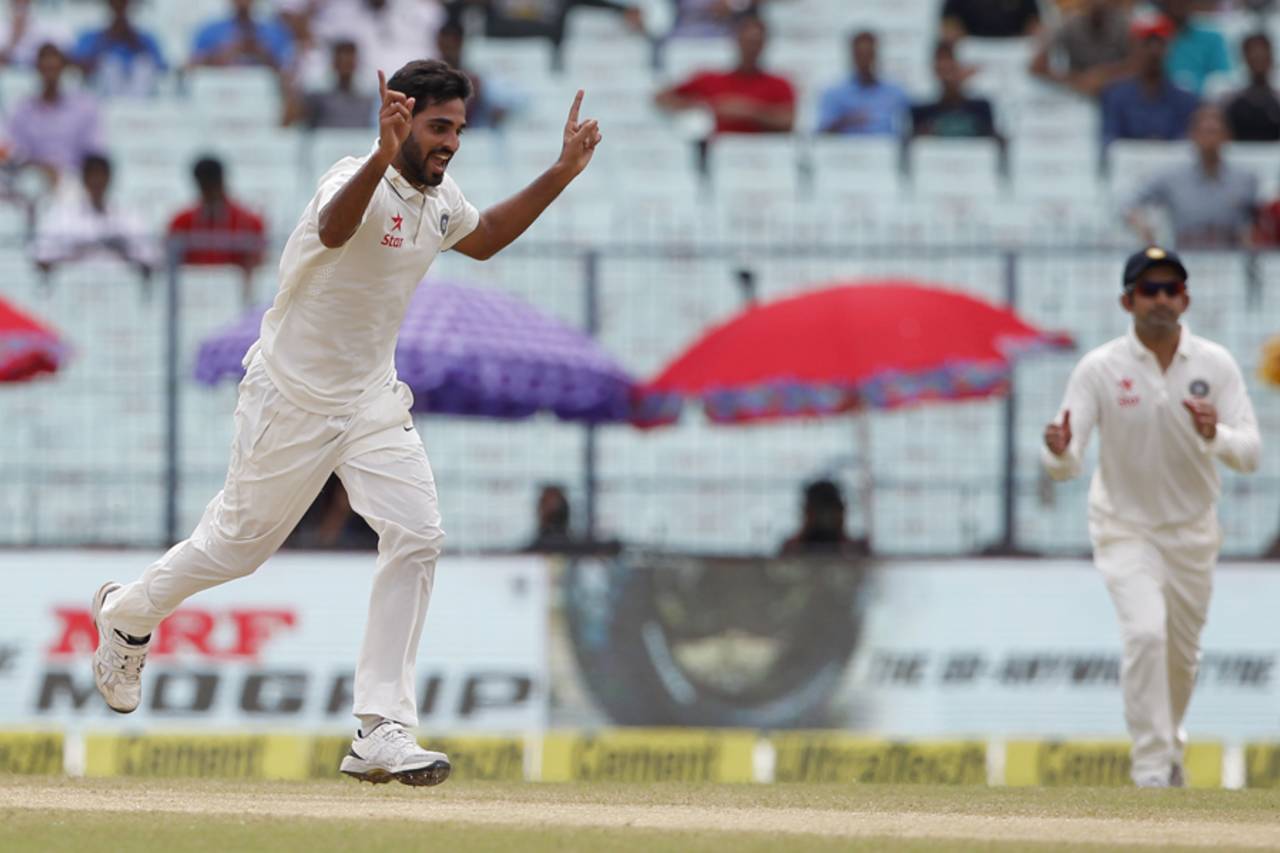Fast bowlers attack the stumps and thrive
In the first three days of play, 20 out of 28 wickets fell to fast bowlers; of those, eight were lbw and four were bowled. Whenever there is uneven bounce on the pitch, this is the kind of pattern that develops for modes of dismissal. On typical Indian pitches, the ball stays low more often and therefore committing to the front foot is a viable option, but this Eden Gardens pitch is different. Some balls have taken off from a good length, which has made the batsmen wary of coming onto the front foot. In addition to that, the balls that have stayed low have tended to skid off the surface, causing the timing of the bat's downswing to be out of sync with the extra pace off the surface. That said, despite their rich returns, seamers from both sides have not bowled enough balls that would have gone on to hit the stumps.
Henry's bouncers unsettle Pujara
Matt Henry's attempted bouncer did not bounce much; Cheteshwar Pujara ducked and found himself in a tangle. The next ball was on an almost identical length and bounced as much as it should have, but the lack of bounce on the previous ball had cluttered Pujara's mind. Instead of ducking or swaying away, he offered a defensive shot. The ball crashed into his gloves and fell short of the fielder at short leg. Given how difficult it is to negotiate bouncers on the pitch, it is surprising that New Zealand's fast bowlers have not used the tactic much against Shikhar Dhawan.
Kohli's infectious positivity...
Virat Kohli's positive approach was not only refreshing but also infectious. The benefit of having a positive outlook is that your mind doesn't allow room for thoughts about impending uneven bounce. Kohli's footwork, right from the first ball he played, showed that he was only reacting to the ball and wasn't concerned about the ball taking off or staying low. His assured footwork was matched by his eagerness to retain strike. On a pitch like this, bowlers want to hone in on one spot for a longer duration, but Kohli's approach forced them to try a little bit extra. His presence at the crease changed the momentum of the innings for good.
Even as Kohli maintained an aggressive outlook throughout, he remained disciplined in leaving everything outside off. Trent Boult persisted with an outside-off line in the 22nd over, the same line that resulted in Kohli's wicket in the first innings, but this time he was mindful of the plan and responded immaculately. The hallmark of a good Test batsman is the ability to find the right equilibrium in attack and defence, and Kohli's discipline today displayed his evolution in the longer format.
India dominate against spin
In the first innings, India's batsmen were fairly cautious against the two New Zealand spinners, but today the approach changed radically. First, Rohit Sharma and Kohli went after Jeetan Patel, thereby pushing him out of the attack, and then Wriddhiman Saha and Rohit took the aerial route to hit Mitchell Santner out of the attack. On a pitch that's offering plenty to the fast bowlers, it's critical to score against spin. India's tactic against spin has set a template for New Zealand to follow.
